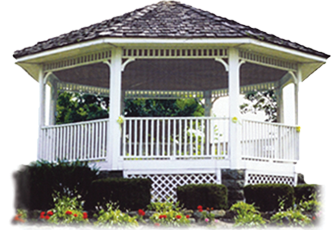By GLORIA PLEVA KACIK
Contributing Writer
Severe weather in the form of tornadoes, hail and flash floods can very well be a part of Spring weather in this area. The North Royalton CERT wants to know if you are ready. “You may need to survive on your own after an emergency. This means having your own food, water, and other supplies in sufficient quantity to last for at least three days. Local officials and relief workers will be on the scene after a disaster, but they cannot reach everyone immediately. You could get help in hours, or it might take days. In addition, basic services such as electricity, gas, water, sewage treatment, and telephones may be cut off for days, or even a week or longer,” according to their website. As part of their training, CERT continues to train its members for disaster preparedness, but, as they mention, each resident should also prepare.
The Office of Emergency Management and the National Weather Service recommends that residents develop a safety plan not only for your home, but also for any other place you may find yourself, inside and out. Planning is key and can be a life saver. Know the difference of the National Weather Service’s “watch,” “warning, and “advisory.” A watch means that the potential exists for less dangerous weather. An advisory means a severe weather event is threatening. A warning means that dangerous weather is imminent and to take immediate action.
Have a family tornado plan in place when you are at home. Distinguish a place where you can take shelter in a matter of seconds, as well as a pre-determined place to meet after a tornado hits.
A yearly practice of a family tornado drill is recommended. Since flying debris is one of the greatest threats during a tornado, store protective coverings, such as mattresses, thick blankets, quilts or sleeping bags in or next to the area that you will take shelter, so it will be ready for immediate use. If a tornado watch is issued, check to make sure all your safety supplies are ready. Stay turned to your local TV, radio or weather radio to be alert of warnings. If you are not at home, look for bathrooms, storage rooms or any other interior areas that are away from windows.
The Ohio Committee for Severe Weather Awareness urges residents to have a family meeting to prepare for a disaster plan. If you live alone, share your plan with a friend or family member.
Develop an escape/shelter plan and find two escape routes per room, if possible. Teach children how to open screens and windows and pick a meeting place outside the home. Practice your plan and discuss how to keep safe during this time.
Organize a disaster supply kit, with enough supplies to last each household member for three days. Preparedness kits should be customized to meet your household’s needs. According to the Ohio Committee for Severe Weather Awareness, the following is a list of basic supplies that could be included in your kit:
“Clothing and Bedding
At least one complete change of clothing and footwear per person
Sturdy shoes or work boots
Rain gear
Blankets or sleeping bags
Hats and gloves
Thermal underwear
Tools and Supplies
Flashlights and extra batteries
Battery-operated radio/Weather Radio/television
Paper cups, plates and plastic utensils
Camping equipment such as sleeping bags, camp stoves, lanterns
Cash, extra credit cards, traveler’s checks
Extra set of house keys/vehicle keys
Manual can opener/Utility knife
Basic tools (pliers, screwdrivers, hammer)
Shut-off wrench (to turn off household gas and water)
Manufacturer’s instructions for opening power-operated garage doors
Duct, electrical tape
Plastic sheeting
Plastic storage containers
Foam, plaster or insulated coolers for food storage
Bagged ice to surround food stored in coolers
Cell phone, extra battery and charger
Fire extinguisher
Sanitation
Toilet paper, towelettes
Soap, liquid detergent
Hand sanitizer
Feminine supplies
Plastic garbage bags, ties
Plastic bucket
Disinfectant
Household chlorine bleach
Food/Drink
One gallon of water per person per day, to last at least three days
Ready-to-eat canned meats, soups, fruits, vegetables
High energy foods (peanut butter, jelly, crackers, granola bars, trail mix)
Canned, bottled or boxed juices
Comfort foods (cookies, hard candy, cereals, instant coffee, tea bags)
Special Items
Medications (prescription and non-prescription)
Spare eyeglasses/contact lenses
Important family documents (store in a waterproof, portable container)
Board games, books, playing cards (for entertainment)
Supplies for individuals with special needs (babies, elderly or disabled persons)
Family or workplace disaster plan
Checklists for your pets/animals
Dogs
Pooper scooper and/or small plastic bags
Crate or portable kennel
Dog collar with ID tags and leash
Dog’s favorite play toy
Cats
Extra litter box, scooper and a week’s supply of litter
Crate or portable kennel
Cat collar with ID tags and leash
Cat’s favorite play toy
Birds, Reptiles, Rabbits and Rodents
At least one week’s supply of cage liners
Long-handled net, heavy towel and blanket
Cage or enclosed carrier
Extra water bowls”
The committee suggests that you revisit your kit yearly to make sure that it adequately provides for your family’s needs. Food, batteries and water should be replaced every six months.
Many senior citizens are especially vulnerable during an emergency. FEMA is offering a four-hour course that helps prepare caregivers for such an event. The course will be held April 25, from 8:30 a.m. to 12:30 p.m. or April 25 from 1:30 p.m. to 5:30 p.m. at the Brecksville Community Center, 1 Community Drive in Brecksville. Those interested can register at: AM Session: http://ja.cuyahogacounty.us/en-US/042514-senior-caregivers-830a.aspx or PM Session: http://ja.cuyahogacounty.us/en-US/042514-senior-caregiver-130p.aspx, or by contacting Serena Steele by email at ssteele@cuyahogacounty.us, or by calling 216-348-4392.





